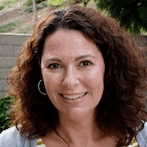
by PRIDE Reading Program Admin | Oct 23, 2016 | A PRIDE Post, Reading Fluency
Once a child is able to decode and recognize words in print, it is crucial that they also gain an ability to read smoothly and at an efficient pace. Stumbling and hesitating over words undermines reading comprehension given that by the time the child gets to the end of a sentence he or she will have completely forgotten what was at the beginning of the sentence!
How do you measure reading fluency in your child?
- Ask the child to read a grade level passage that they have never seen or read before.
- Using a timer have him or her read this text for one minute.
- While reading the passage, tally the errors the child makes while reading.
- Stop the child after one minute. Count the number of words read in the minute and subtract any errors made by the child. For example: if he or she read 120 words in a minute and made five errors then the child’s reading fluency rate is 115.
- Use the chart below to determine if your child’s reading rate is on target.
Mean Words Correct Per Minute “Targets” for Average Students in Grades One through Eight
| Grade | Fall Target | Winter Target | Spring Target |
| | | | |
| 1 | Not applicable | 20 | 50 |
| 2 | 50 | 70 | 90 |
| 3 | 70 | 90 | 110 |
| 4 | 95 | 110 | 125 |
| 5 | 110 | 125 | 140 |
| 6 | 125 | 140 | 150 |
| 7 | 125 | 140 | 150 |
| 8 | 130 | 140 | 150 |
Johns, J. and Berglund, R. (2006). Fluency strategies and assessments. Dubuque, IA: Kendall/Hunt Publishers.
How do you determine a child’s reading level to test for fluency?
Probably the easiest ways to determine if a book is at an appropriate reading level for your child is the Five Finger Rule. Have the child begin reading a chapter, and put down one finger each time he struggles with a word. If he reaches the end of the page before you get to five fingers, the book is written at a comfortable level for independent reading.
What can you do to increase and improve your child’s reading fluency?
The very best way is through practice, both through oral and silent reading.
One approach to practicing reading fluency is for the child to repeatedly read the same passage or text either with a parent or tutor three to four times. Rereading text gives the child multiple opportunities to read unfamiliar words. After repeated reading, those words become familiar. The child should practice rereading aloud texts that are reasonably easy for them and at their reading level and include words that the child already knows and can decode easily. A text is considered at reading level if the child can read it with 95% accuracy. This text should also be relatively short consisting of 50-200 words. First, the parent or teacher reads the text aloud to the student. Then the student reads the same passage to the adult or chorally with the adult. Finally, the student rereads the passage again independently.
Reading frequently will also improve reading fluency since reading is a skill that improves with practice. Children can improve their reading fluency by reading independently each day for at least 20 minutes. Again it is important that the child read a book or text that is at their grade level or slightly below their grade level. Children should be encouraged and allowed to read a book of their choice – even if this doesn’t involve classic novels for their independent reading. For gaining fluency, quantity is more important than quality. Whenever possible, use their interests to guide their reading choices and give them some power in making decisions about what to read.
Memorizing Dolch sight words is another method to improve reading fluency in children. By memorizing common words like “the”, “said”, “what”, “you”, the child will read texts and stories more fluently. Many of these words are in almost anything they read. Readers will have more experiences of success if they know these words. Dolch words are service words; they give meaning and direction, which are necessary for understanding sentences.
Model good reading for your children. Share what you read with them or read what they are reading. Have discussions and talk to them about the things you find important in what you read and why. Parents and teachers need to read themselves and read in front of their children and students. Children will imitate you and will be more likely to read and read well in a house and classroom filled with all kinds of interesting books, magazines and texts.
Karina Richland is the Founder and Director of PRIDE Learning Centers, located in Los Angeles and Orange County. Ms. Richland is a certified reading and learning disability specialist. Ms. Richland speaks frequently to parents, teachers, and professionals on learning differences, and writes for several journals and publications. You can reach her by email at karina@pridelearningcenter.com or visit the PRIDE Learning Center website at: www.pridelearningcenter.com

by PRIDE Reading Program Admin | Apr 24, 2015 | A PRIDE Post, Auditory Processing Disorder
At PRIDE Learning Center, we offer Auditory Processing reading help. It is just amazing how well our kids learn to read, write and comprehend using an Orton-Gillingham reading program.
What is Auditory Processing Disorder?
Auditory Processing is a language processing disorder where a child has significant trouble processing sounds, particularly with the sounds associated with speech. It is a very common learning disability and affects about 5% of school-age children. PRIDE Learning Center offers Auditory Processing Reading Help by using an Orton-Gillingham reading program. This is the program that we at PRIDE are experts at!
What is Orton-Gillingham?
Dr. Samuel T. Orton and Dr. Anna Gillingham developed the Orton-Gillingham approach in the 1930’s. In Orton-Gillingham reading is taught sequentially proceeding from single letters and symbols to one-syllable words and then to longer words. Multisensory approaches are emphasized throughout, with each step of instruction incorporating auditory, visual, and kinesthetic channels. Writing and letter formation are taught systematically, one letter at a time, and each lesson includes emphasis both on auditory and visual aspects of letters and words. Orton-Gillingham includes teaching visual strategies for recognition of phonetically irregular words, and also provides explicit, systematic instruction in the development of vocabulary and reading comprehension.
How does using an Orton-Gillingham reading/spelling program help a child with Auditory Processing Disorder?
Simultaneous Multisensory Instruction: Children with auditory processing deficits who use all of their senses when they learn (visual, auditory, tactile, and kinesthetic) are better able to store and retrieve the information. The child with APD might see the letter B, say its name and sound, and write it in the air all at the same time.
Intensive Instruction: Reading instruction for children with auditory processing must be much more intense, and offer much more practice, than for regular readers.
Direct, Explicit Instruction: Children with APD need to be taught directly and explicitly each and every phoneme (sound) of the English language. They must be taught one spelling rule at a time, and practice it until it is stable in both reading and spelling, before introducing a new rule.
Systematic and Cumulative: Orton-Gillingham starts at the very beginning and creates a solid foundation with no holes. It is taught by presenting one rule at a time and practicing it until the child can automatically and fluently apply that rule both when reading and spelling. Previously learned material is constantly repeated into each new lesson and students progress forward in their reading and spelling with no gaps.
Children with Auditory Processing Disorder need more structure, repetition and differentiation in their reading instruction. They need to learn basic language sounds and the letters that make them, starting from the very beginning and moving forward in a gradual step by step process. This needs to be delivered in a systematic, sequential and cumulative approach. For all of this to “stick” the children will need to do this by using their eyes, ears, voices, and hands.
Learn more about the New PRIDE Reading Program

Karina Richland, M.A. is the Founder of PRIDE Learning Centers, located in Los Angeles and Orange County. Ms. Richland is a Certified reading and learning disability specialist. Ms. Richland speaks frequently to parents, teachers, and professionals on learning differences, and writes for several journals and publications. You can visit the PRIDE Learning Center website at: www.pridelearningcenter.com

by PRIDE Reading Program Admin | Jan 7, 2014 | Pride Redondo Beach
Kami Weinstein, M.Ed., has been selected as the new Director for the PRIDE Learning Center in Redondo Beach.
In her role, Mrs. Weinstein will direct the daily operations of the tutoring center to provide quality instruction and evaluation as well as interact with staff, children and parents and promote the goals and objectives of the programs.
PRIDE Learning Center offers one-on-one tutoring and reading therapy sessions for students with learning disabilities including dyslexia, auditory and visual processing, ADHD, autism and other learning differences. PRIDE Learning Center offers reading, writing, comprehension and math tutoring programs for students of all ages.
“What a privilege it is to help lead the Redondo Beach team here at PRIDE Learning Center” states Weinstein. “ I look forward to an exciting new year in the South Bay community. I am confident that our multi-sensory based teaching methods will help many students soar to new heights in their reading and writing. What an honor it is to be a part of their development and growth in literacy.”
Weinstein earned her M.Ed in Reading and Literacy from Sam Houston State University in Texas with a TEFL teaching certification. She is certified in the Barton Reading and Spelling System, an Orton-Gillingham based reading program. She recently returned from Nairobi, Kenya where she used her Orton-Gillingham expertise with learners struggling with dyslexia and learning disabilities.
“I saw great reading success with my students in Kenya using the Orton-Gillingham reading and spelling program just as I have seen huge progress with those using our programs here at PRIDE.” says Weinstein. “ A learner’s confidence and future really is changed when they can learn to read and write; I love being a part of that change.”
There will be an Open House for the public to come meet PRIDE Learning Center’s new Director, Kami Weinstein on Thursday, January 23rd from 1:00pm – 3:00pm. PRIDE Learning Center is located at 1603 Aviation Blvd., Suite G, Redondo Beach, CA 90278. For more information contact Kami Weinstein at 310-322-2800 ext. 6 or you can visit the PRIDE Learning Center website at: www.pridelearningcenter.com




